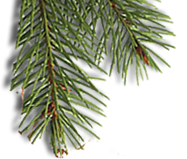Forest Succession
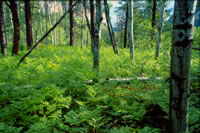 In general Spearfish Canyon has been ecologically disrupted due to settlement actions after 1876. At the same time portions of the canyon have been preserved e.g., old growth pine and spruce and side canyons and draws that are refuges for vegetation little subjected to human intrusion. In general Spearfish Canyon has been ecologically disrupted due to settlement actions after 1876. At the same time portions of the canyon have been preserved e.g., old growth pine and spruce and side canyons and draws that are refuges for vegetation little subjected to human intrusion.
At this time the canyon is over 100 years into the vegetation cycle recovering from extensive logging and natural and man caused fires that set the process back to primary stages. The canyon is the beneficiary of these happenings in the patches of oak, birch, aspen and other deciduous trees and plants that create bio-diversity and scenic spectacles.
Ecosystems, including both plant and animals interrelationships, in normal circumstances are not static but are dynamic. Humans have introduced through settlement activities of the 1800s a stabilizing factor that deletes the change factor essential to ponderosa pine forests known as 'fire'. This missing factor, now excluded from operation in the Spearfish Canyon watershed, will mean that vegetation will progress too late or mature successional stage that will probably not meet human expectations and objectives. Pine and spruce will naturally predominate at the expense of deciduous species. There will be a substantial decrease in species variety of both plants and animals. A listing of the main ecological impacts due to lack of fire are shown on page lll-137 of the Final EIS of the 1996 Revised Black Hills Forest Land and Resource Plan . (Covington and Moore 1994).
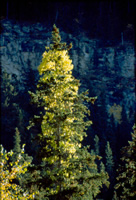 The Forest Service identifies a unique convergence of 4 major vegetative complexes in the Canyon area; Rocky Mountain Coniferous dominated by ponderosa pine; Northern Coniferous Forest complex dominated by white spruce, Deciduous Forest Complex consisting of hardwood trees and shrubs; and Grassland Complex of the Northern Great Plains. In the Canyon proper, Spruce occupy the upper end of the canyon, Pine the center part with deciduous intermixing. The lower (North end) of the canyon is a mixture of pine and deciduous and at the extreme north end the grassland complex may be present however it seems to be the Deciduous complex. The Forest Service identifies a unique convergence of 4 major vegetative complexes in the Canyon area; Rocky Mountain Coniferous dominated by ponderosa pine; Northern Coniferous Forest complex dominated by white spruce, Deciduous Forest Complex consisting of hardwood trees and shrubs; and Grassland Complex of the Northern Great Plains. In the Canyon proper, Spruce occupy the upper end of the canyon, Pine the center part with deciduous intermixing. The lower (North end) of the canyon is a mixture of pine and deciduous and at the extreme north end the grassland complex may be present however it seems to be the Deciduous complex.
The Forest Service uses 5 structural stages for the forest ranging from grass/forbs at Stage 1 to Stage 5 old growth. This is one way of looking at it. (EIS pgs III-133-34) This is displayed on their GIS/RIS system. The Nature Conservancy did a survey of the BHNF that was completed in 2000. The survey identifies vegetation types from an ecological perspective, e.g., species of plants that are in association with each other on different sites. These may be in any one of the structural stages previously discussed. Within the Spearfish Canyon management zone as identified by the USFS are the following vegetative communities…there may be some others if the whole watershed is considered. This data is not plotted by GIS/RIS.
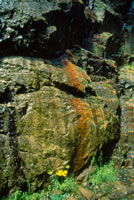 Pinus ponderosa / Arctostphylos uva-ursi Woodland (Ponderosa Pine / Bearberry Woodland) Pinus ponderosa / Arctostphylos uva-ursi Woodland (Ponderosa Pine / Bearberry Woodland) - Pinus pondserosa / Mahonia repens Forest (Ponderosa Pine / Oregon Grape Forest)
- Pinus ponderosa / Pascopyrum smithii Forest (Ponderosa Pine / Western Wheatgrass Woodland)*
- Picea gluaca / Linnaea borealis Forest ( White Spruce / Twinflower Forest)
- Picea gluaca / Vaccinum scoparium Forest ( White Spruce / Grouseberry Forest )
- Pinus ponderosa / Juniperus communis Woodland (Ponderosa Pine / Common Juniper Woodland)
- Pinus ponderosa / Prunis Virginiana Forest ( Ponderosa Pine / Chokecherry Forest)
- Pinus ponderosa / Quecus macrocarpa Woodland (Ponderosa pine/Burr Oak Woodland)
- Pinus ponderosa / Symphoricarpos albus Forest (Ponderosa Pine / Snowberry Forest)
- Populus tremuloides / Corylus cornuta ( Aspen / Beaked Hazel Forest)*
- Populus tremuloides / Pteridium aquailinum Forest (Aspen / Bracken Fern Forest )*
- Populus tremuloides / Spiraea betulfolia Forest (Aspen / Shiny-leaf Spiraea Forest )*
- Quercus macrocarpa / Prunus Virginiana - Symphoricarpos occidentalis Woodland Burr Oak /Chokecherry-Western Snowberry Woodland )
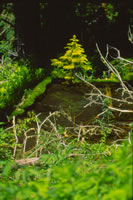 Sporobulus hterolepis - Stipa richarsonii - Danthonia intermedia Hervbaceous Vegetation (Black Hills Montane Grassland)* Sporobulus hterolepis - Stipa richarsonii - Danthonia intermedia Hervbaceous Vegetation (Black Hills Montane Grassland)* - Igneous/Metamorphic Black Hills Butte Sparse Vegetation (Black Hills Igneous/Metamorphic Butte)?
- Pinus ponderosa Limestone Cliff Sparse Vegetation (Ponderosa Pine Limestone Cliff)
- Pinus ponderosa Scree Woodland (Ponderosa Pine Scree Woodland)? Little Crow Peak/Rubicon?
- Scree/Talus Black Hills Sparse Vegetation (Black Hills Talus)
- Fraxinus pennsylvanica - Ulmus americana / Symphoricarpos occidentalis Forest ( Ash -Elm / Wolfberrry Forest
- Populus angustafolia / Cornus sericea Woodland (Narrowleaf Cottonwood / Red-osier Dogwood Forest)
- Populous deltoides - (Salix amygdaloides/Salix exigua Woodland (Cottonwood - Peachleaf Willow Floodplain Woodland)?
- Salix amygdaloides Woodland (Peach-leaf willow Woodland)
- Syphoricarpos occidentalis Shrubland (Western Snowberry Shrubland)?
- Betula papyrifera / Corylus cornuta Forest (Paper Birch / Hazel Forest)
- Crataegus douglasii - (Cretaegus chrysocarpa) Shrubland (Black Hawthorne Shrubland)
- Quercus macrocarpa / Ostrya virginiana Forest ( Bur Oak - Ironwood Forest)
- Betula occidntalis / Cornus sericea Shrubland (Water Birch Red-osier Dogwood Shrubland ) ? Little Spearfish ?
- Picea gluaca Alluvial Black Hills Forest (White Spruce Alluvial Black Hills Forest ) ?*
- Salix bebbiana Shrubland (Beaked Willow Scrub )?*
- Carex nebrascensis Hebaceous Vegetation (Nebraska Sedge Wet Meadow ) ?*
- Typha spp. - Scirpus spp. - Mixed Herbs Great Plains Herbaceous Vegetation (Northern Great Plains Cattail Bulrush Marsh)?
- Typha spp. Great Plains Hebaceous Vegetation (Northern Great Plains Cattail Marsh)
- Glyceria grandis-Poa palustris Mixed Herbaceous Black Hills Herbaceous Vegetation (Black Hills Streamside Vegetation)
|


